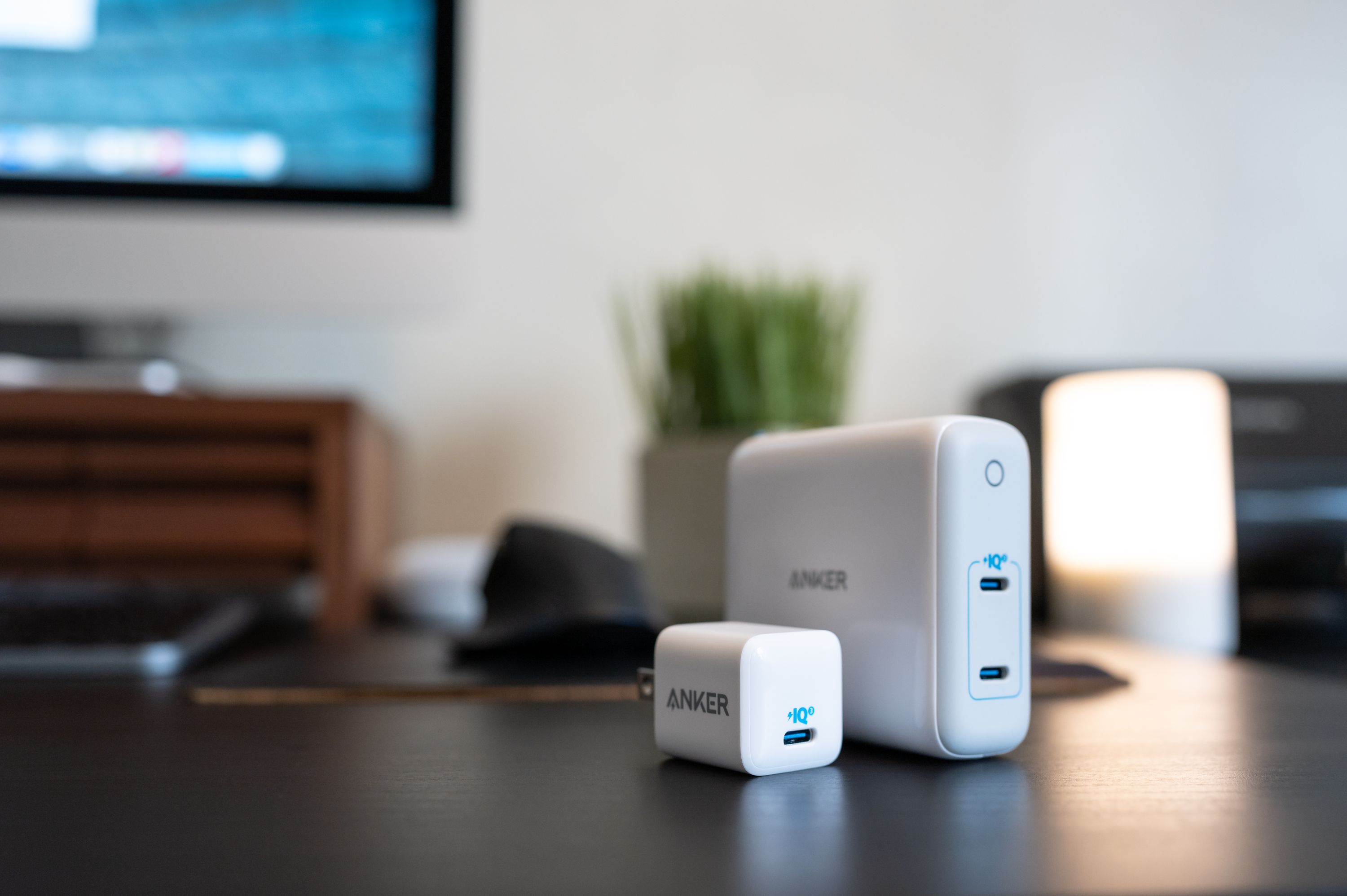Anker PowerPort III Charging Bricks
Faster charging, smaller footprint

My apartment building was constructed about 80 years ago, and as a result we have exactly one electrical outlet per room. You can imagine how this might pose logistical challenges for a technology enthusiast like yours truly.
I’m stuck using power bars, extension cables, and careful load balancing to make sure all our devices get power without overloading any circuits. So when a product emerges that allows me to consolidate, reduce, or remove items from outlets, I get disproportionately excited.
Powered by Anker
Anker is one of my go-to brands for power-related peripherals; I have their wireless charger sitting on my desk, I use their cables, and I use one of their portable batteries to recharge my devices on the go.
Recently, I added their two latest PowerPort III wall charging bricks to my collection to streamline my setup: the tiny single-port Anker Nano, and its larger, more powerful two-port sibling.
The Technology
Both chargers share a few key technologies that are worth mentioning.
They feature exclusively USB-C ports, and both owe their compact size to the use of gallium nitride (GaN) instead of silicon as the semiconductor material. GaN chargers have taken the market by storm in recent years thanks to their superior charging efficiency (producing less heat) and reduced size.
In addition, the internal circuitry includes an Anker-specific enhancement for ensuring that charging happens quickly and safely: the iQ3 power distribution system. This manages the flow of power by intelligently identifying your connected devices and providing the maximum safe charging speeds—including distributing the charging capacity between multiple devices on the two-port charging brick. If you’ve heard of Quick Charge and Power Delivery standards, then you can think of iQ3 as Anker’s all-encompassing way of deploying the right charging standard to the right device without you having to worry about it.

Anker Nano
The diminutive 20w Anker Nano charger is a tiny powerhouse, designed to replace the standard 5w brick that used to come with most phones. The Nano packs more than 3x the charging power—up to 20w—into a housing that’s about an inch in each dimension and weighs as much as a AA battery.
With my iPhone 11, this means I can get to >50% charge in just 30 minutes, whereas the Apple-provided brick doesn’t even get me to 20% in that timeframe. If you recently bought an iPhone 12 and wanted to get a faster charging solution for it that’s more compact than the Apple equivalents, this is your best bet.
The Nano is a natural fit for my on-the-go charging pouch, where it can replace an older brick that’s more than three times as large. Being able to pack the same charging potential into a smaller space at a lighter weight is terrific, especially since I like to pack light when I travel (remember travel…?)

Anker 60w Two-Port Wall Charger
At my desk, I’ve been able to replace two of Apple’s standard 29w charging bricks with Anker’s new PowerPort III alternative, freeing up an outlet slot.
Though it’s only slightly larger, Anker’s charger provides more than twice the power output and can balance charging between both connected devices. If there’s only a single device connected, it can take advantage of the full 60w to really speed up charging—a 13” MacBook Pro can be fully recharged in just over two hours.
This charger also has another trick up its sleeve: interchangeable plugs. This is a thoughtful detail that makes it a versatile solution for international travel—albeit at the cost of packing size. Before the pandemic, I had mostly been traveling to places with the same North American plugs as I’m used to at home, but it’s nice to know that I have an alternative for when I’m headed somewhere with a different standard.
Power Up
I think of charging peripherals as an under-appreciated upgrade and a useful gift idea for the techies in your life. Modern options like these Anker ones are almost certainly smaller, more powerful, and more sophisticated than what you’re using now.
Considering how much more time we’re spending with our devices while locked down and sheltering from the pandemic, the ability to get back up and running faster is a real advantage and a good reason to consider stepping up your charging game.